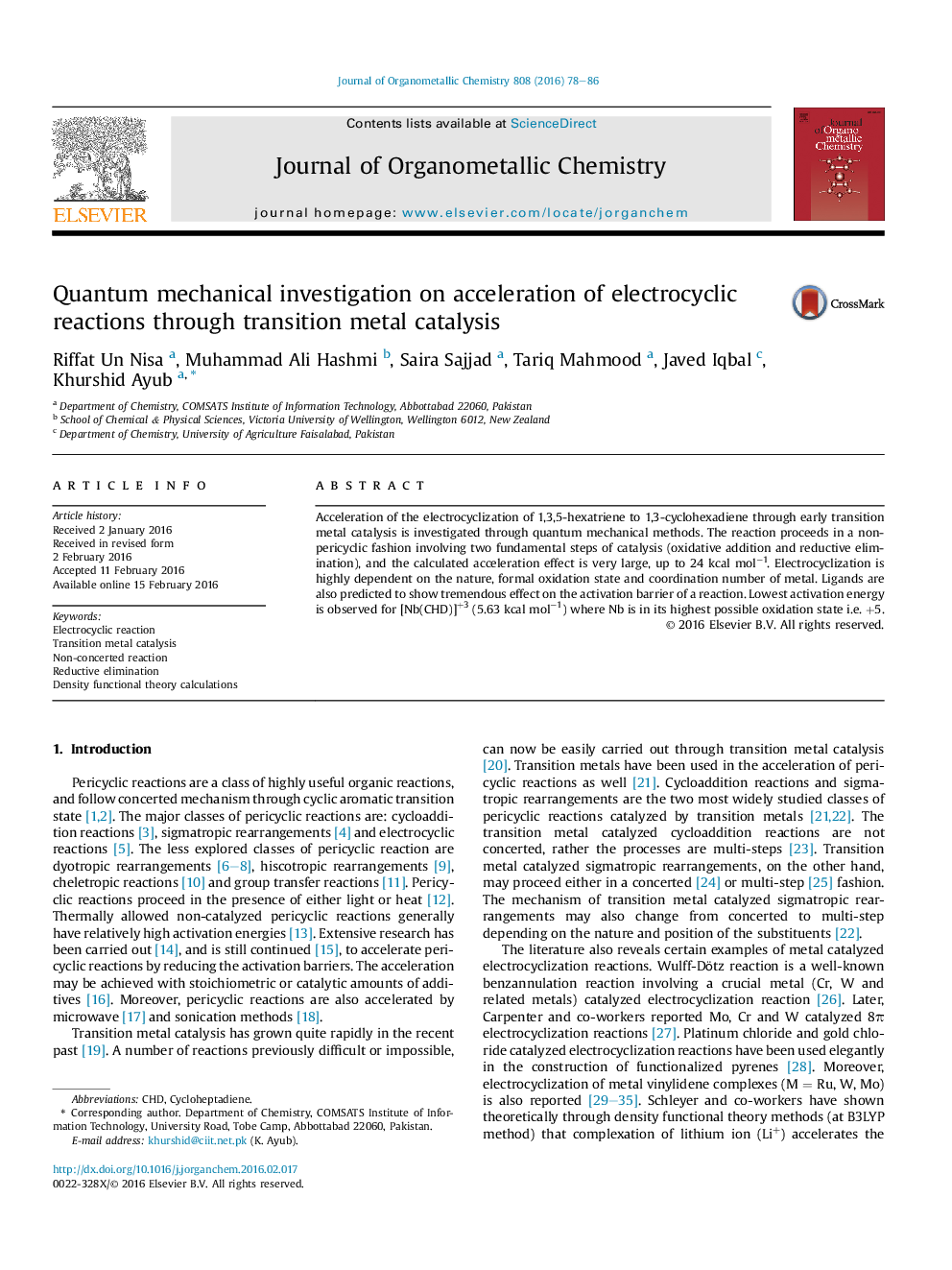| Article ID | Journal | Published Year | Pages | File Type |
|---|---|---|---|---|
| 1324634 | Journal of Organometallic Chemistry | 2016 | 9 Pages |
•First mechanistic studies on transition metal catalyzed electrocyclization.•Oxidative addition and reductive elimination steps have been observed.•Ligands, oxidation state and coordination number of metal show profound effect.•Lowest activation energy of 5.63 kcal mol−1 was observed for [Nb(CHD)]+3.
Acceleration of the electrocyclization of 1,3,5-hexatriene to 1,3-cyclohexadiene through early transition metal catalysis is investigated through quantum mechanical methods. The reaction proceeds in a non-pericyclic fashion involving two fundamental steps of catalysis (oxidative addition and reductive elimination), and the calculated acceleration effect is very large, up to 24 kcal mol−1. Electrocyclization is highly dependent on the nature, formal oxidation state and coordination number of metal. Ligands are also predicted to show tremendous effect on the activation barrier of a reaction. Lowest activation energy is observed for [Nb(CHD)]+3 (5.63 kcal mol−1) where Nb is in its highest possible oxidation state i.e. +5.
Graphical abstractFigure optionsDownload full-size imageDownload as PowerPoint slide
